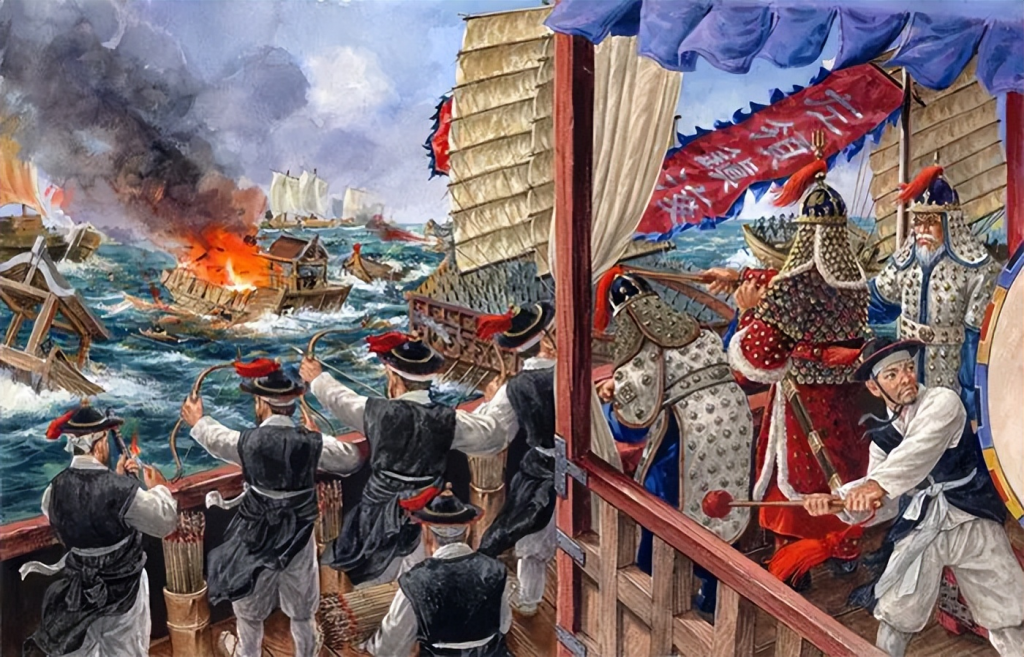In the 17th century, the political landscape of East Asia saw dramatic shifts, particularly with the collapse of the Ming Dynasty and the rise of the Qing Dynasty. One of the most fascinating and often overlooked aspects of this period is Korea’s role in aiding the Qing, a pivotal moment in history when the once-independent kingdom of Joseon (Korea) found itself aligned with the Qing to the detriment of the Ming.
Korea’s Shift of Allegiance
During the early 1600s, Joseon Korea was a vassal state of the Ming Dynasty. But as the Qing, led by the Manchus, began their southern expansion, Korea made a strategic pivot. In the 1620s, after the Qing’s devastating victories over the Ming, Korea, under King Injo, found itself at the mercy of the Manchus. Despite previous hostilities, the Joseon court was forced to yield to the Qing, ultimately signing a humiliating treaty that left the kingdom under Qing suzerainty.
But this shift wasn’t purely out of fear; it was also pragmatic. The Qing were not just a rising power—they were a force to be reckoned with. When the Manchus demanded tribute, including rare items like mink pelts and water buffalo horns, Joseon complied, knowing that defiance would be met with military retaliation.
The Role of the Korean Navy
One of the most significant resources Korea provided to the Qing was its formidable navy. Korea’s navy had long been seen as a stronghold of national defense, with specialized ships such as the Panokseon, a type of turtle ship known for its defensive capabilities. This navy, which had previously helped repulse Japanese invasions, was now under Qing control.

In 1636, after Korea’s second defeat at the hands of the Qing, the Korean king agreed to send troops and ships to support the Qing in their fight against the Ming. This was a turning point. Not only did Korea contribute resources like grain and military personnel, but its navy, which was considered superior to Ming ships, played a crucial role in naval operations during the Qing’s conquest of the Ming.
The “Lijun” Ships: The Real Game-Changer
One of the most remarkable aspects of Korea’s contribution was its ships. These “Lijun” ships were recognized by the Qing as being more advanced than their own naval vessels. The ships’ robust construction, strategic design, and skilled sailors gave the Qing an upper hand in naval combat. The Ming forces, suffering from depleted resources, had no way to compete with the might of the Korean fleet.
In one notable incident, Korea’s navy helped transport Qing soldiers and supplies to critical locations, disrupting the Ming’s defense efforts. These vessels were often dispatched to the coastal regions of China, where they served as both a logistical lifeline for the Qing and a powerful force against the Ming.
The Battle of Maodao: A Missed Opportunity for Ming Defense
The Ming court, on the other hand, was caught off-guard by the maneuvering of the Korean navy. Even though the Ming had received intelligence about the impending Korean fleet movements, confusion and lack of communication led to a disastrous situation. The Ming mistakenly believed that the Korean ships were part of a large invasion force and prepared for battle. When they finally confronted the Koreans, they found only a handful of scout ships, resulting in minimal casualties on both sides. Meanwhile, the true threat—the full Korean fleet—continued to transport supplies to Qing forces without interference.
A Weakening Ming Dynasty
The reality of the Ming’s weakened military might became painfully clear during this period. Despite the occasional strategic victory, the Ming navy suffered from a lack of resources, poor coordination, and low morale. The once-great empire struggled to maintain its naval strength, and the intervention of Korea’s navy was yet another blow to the fading Ming power.
By the time the Ming court had fully realized the extent of the threat posed by Korea’s allegiance with the Qing, it was too late. The Ming had already begun to lose ground, both on land and at sea. The Qing, with Korea’s support, were in a prime position to consolidate their power and eventually overthrow the Ming dynasty in 1644.
The Cultural and Modern Connection
While the military strategies and alliances of the 17th century may seem far removed from today’s world, they serve as a reminder of the importance of alliances and strategic thinking in international relations. The shifting allegiances of Korea during this time show how smaller powers can play crucial roles in shaping the outcomes of larger geopolitical conflicts. Moreover, the legacy of the Korean navy’s involvement with the Qing provides insight into how naval power, logistics, and timely intelligence can influence the course of wars, something still relevant in modern military strategy.
In contemporary times, Korea’s military legacy continues to be a point of national pride. The country’s strategic location, advanced technology, and well-trained forces play a critical role in regional security dynamics. Just as the Joseon navy once helped to secure the Qing Dynasty’s dominance, modern Korea’s military capabilities contribute to its standing as a key player on the world stage.
Conclusion
The story of Korea’s role in the downfall of the Ming Dynasty is one that showcases the importance of naval power, political alliances, and the complex dynamics of regional conflicts. It’s a tale of shifting allegiances, strategic decisions, and a reminder that even the smallest players on the geopolitical stage can alter the course of history.


No comments yet.